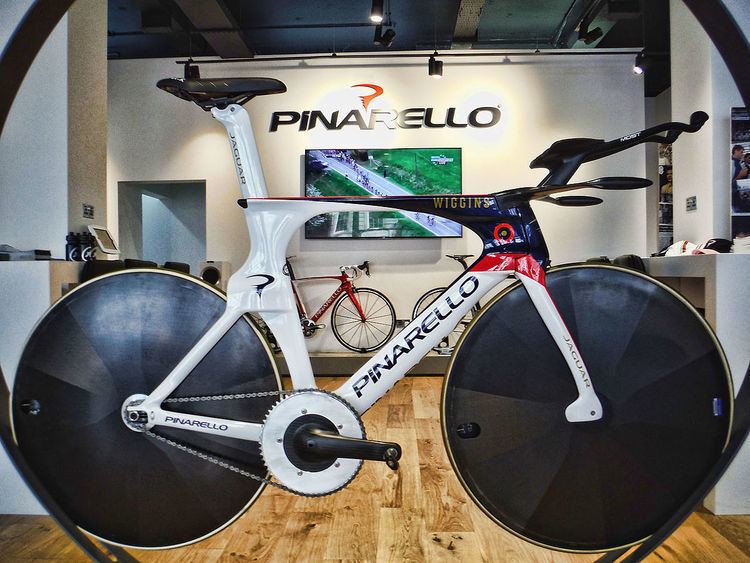 | ||
A track bicycle or track bike is a bicycle optimized for racing at a velodrome or outdoor track. Unlike road bicycles, the track bike is a fixed-gear bicycle; thus, it has only a single gear ratio and has neither a freewheel nor brakes. Tires are narrow and inflated to high pressure to reduce rolling resistance. Tubular tires are most often used in track racing and training, though advances in clincher tire design have seen them being used somewhat more often.
Contents
History
The first bicycle race is popularly held to have been a 1,200 meter race on the 31 May 1868 at the Parc de Saint-Cloud, Paris. It was won by expatriate Englishman James Moore who rode a wooden bicycle with iron tires. The machine is now on display at the museum in Ely, Cambridgeshire, England.
The Union Cycliste Internationale was founded on 14 April 1900 by Belgium, the United States, France, Italy, and Switzerland to replace the International Cycling Association, which had been formed in 1892, over a row with Great Britain as well as because of other issues.
Frame design
A track frame is specific to its intended use, with emphasis on rigidity and lightness. Frames for sprinting seek to maximize rigidity, while those for general racing seek to reduce aerodynamic drag.
Rules
The governing body, the Union Cycliste Internationale (UCI), sets limits on design and dimensions as well as the shape and diameter of the tubes used to construct the frame.
Geometry
A track bicycle differs from one used on the road by having:
Typical track frames use 120mm spacing for the rear hub. The dropouts or track ends face rearwards to facilitate chain tension adjustment.
Material
Frames are typically made of steel, aluminium, or titanium alloys, carbon fiber, or a combination of these materials. Carbon fiber frames are most common at the professional level. Frames are assembled from tubular elements (typically with round or elliptical cross sections), or cast in a mould for "one-piece" type models. The UCI permits special exceptions for the construction and geometry of track bikes.
Gear ratio
Track bicycles have only one drive sprocket (or cog) and one chainring, so the size ratio is relevant. A lower gear ratio allows quicker acceleration or 'jump' but can limit top speed. A larger gear ratio makes sustained speed easier, important in pursuit racing, time trial and bunched races such as points or scratch events. Without a good jump, the rider risks opponents accelerating away; without good sustained speed, the rider will be unable to keep up with a fast race. Track cyclists practice fast pedalling (cadence) as a compromise.
Long-distance attempts such as the hour record sometimes use high gear combinations such as 52x12 or 55x14. Ondřej Sosenka used 54x13 with 190mm cranks to set the 2005 record.
Chain
There are two common widths of single speed and fixed gear bicycle chains: 1⁄8 inch and 3⁄32 inch. The chainring, sprocket and chain should all be the same width. Although an 1⁄8 inch chain will work on a 3⁄32 inch chainring or sprocket, it is not ideal. A 3⁄32 inch chain will not work on a 1⁄8 inch chainring or sprocket. Because they do not need to shift between sprockets, track chains use a full bushing to reduce flex and increase strength. Newer bicycles with derailleur gears use bushingless chains which flex, making gear changing possible.
